Last Chance to Catch NYC's Holiday Notalgia Train
We met the voices of the NYC subway on our nostalgia ride this weekend!


The Sixties and Seventies were an interesting period of time for Montreal. In the race to become a modern metropolis, the city’s skyline became a massive jumble of cranes and concrete. Back then, an ambitious man named Jean Drapeau was mayor of the city. Today, he is often designated as a visionary, as it was under his 29-year rule that many of the city’s biggest projects happened, such as 1967 World Fair (best known as Expo 67) and the 1976 Summer Olympics.
Via these two events, Montreal attracted the world’s attention and became the city that it is today, a booming cultural metropolis.
The modernization process was aggressive and many neighborhoods and historic buildings were destroyed in order to make place for the new infrastructures that were required to host both happenings. This engendered much protesting at the time and ongoing criticism in the following decades, regarding costs and what to do with the buildings once the events were over.
However, today the tumult has calmed a bit and these buildings are usually seen as quirky and retro. Along the way, they have become integral parts of Montreal’s eclectic panorama.
In this first installment of a series about the quirky buildings of Montreal, we will talk about 3 buildings that were created for Expo 67 and how they are being used today.
Expo 67 was held from April to October 1967. It is estimated that 50 million people made the trip to Île Sainte-Hélène and Île Notre-Dame to visit the Fair, which hosted the pavilions of 62 nations. Each of these countries had their own designated area and many of them hired prominent architects to create elaborate, audacious buildings for them. Most of these installations have disappeared over the years but a few have remained standing.
Here are the most remarkable ones that are still in use:
Quirky building #1
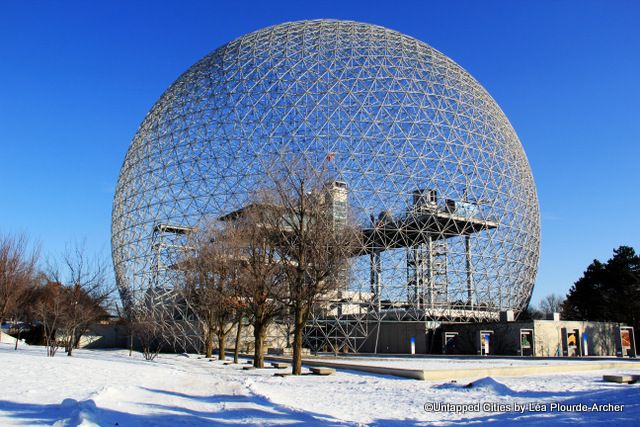
The Biosphere (United States pavilion, Ile Sainte-Hélène)
The United States pavilion is one of the most distinctive installations built on the grounds of Expo 67. Its shape, in the form of a geodesic dome, is directly related to the signature style of its creator, noted inventor and futurist Richard Buckminster Fuller.
Inside, an exhibit showcased hundreds of objects recounting a typical vision of American culture (like spaceships, baseball bats, Raggedy Ann dolls and Andy Warhol paintings).
Once the Expo was over, the building served various purposes such as hosting private events or being used as a bird sanctuary. In 1976 however, a massive fire destroyed the external (translucent acrylic) skin. Regardless of this, the structure remained intact and in 1990, an environmental museum was installed inside.
Recently, it was announced that the museum would be closing in late 2013. So far it is not known what will become of the Biosphere.
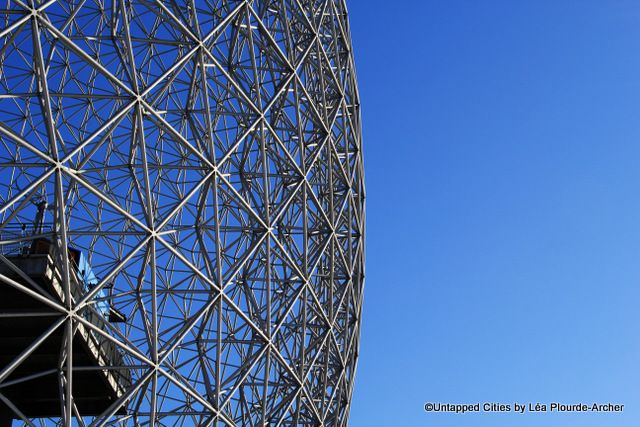
Quirky building #2
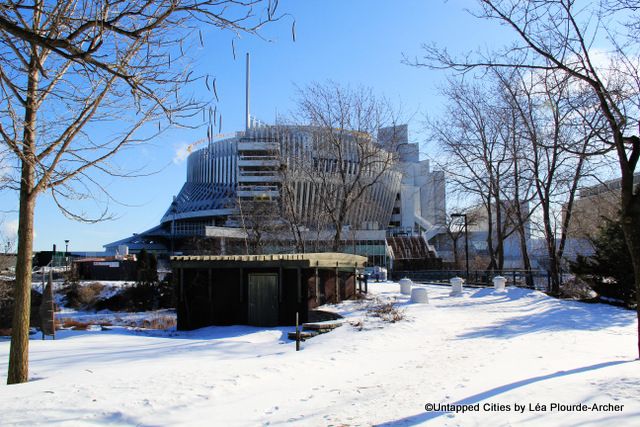
Casino (France Pavilion and Quebec Pavilion, Ile Notre-Dame)
France’s pavilion was one of the largest buildings at the Expo 67. The massive 9 story construction was designed by architects Jean Faugeron and André Blouin. When the gates of the Fair closed, it was turned into the Palais De la Civilization, a historical and sociological museum. In 1993, the Montreal Casino took up the space and has been there ever since. A few years later, Quebec’s pavilion (seen at the right hand side of the last picture) was also annexed into the leisure complex.
Quirky building #3
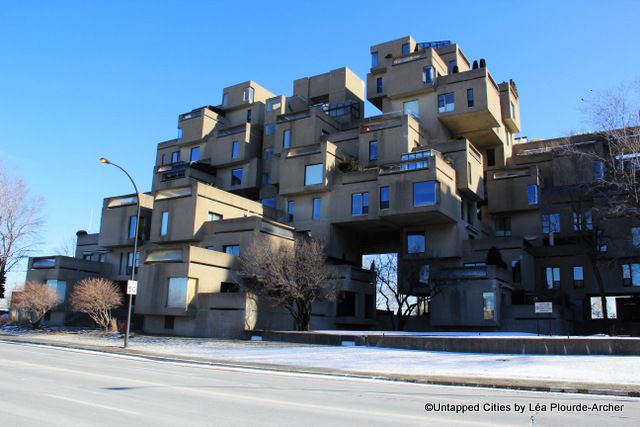
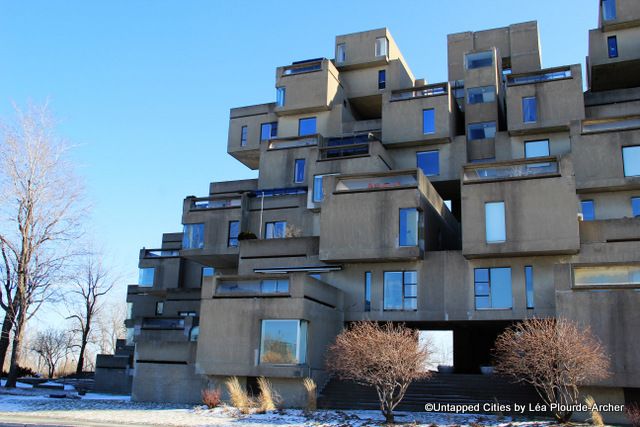
Habitat 67 (Cité du Havre):
Aside from the country pavilions, Expo 67 also had theme pavilions like: Man the creator, Man the producer or Man the explorer. Habitat 67 was one of these. Designed by eminent architect Moshe Safdie, Habitat was supposed to represent the housing complex of the future.
During the Expo, visitors could explore a prototype apartment and witness firsthand the architect’s idea of affordable, modern urban living.
Safdie, then a young Mcgill University student, initially hoped to expand the residential complex throughout the surrounding area and even wanted to include boutiques, restaurants and a school but was forced to review his plans due to a lack of funds.
The full structure that was finally constructed consists of 354 individual, identical concrete blocks that are assembled to form 3 interconnected pyramids, 12 floors and 146 independent units (each made up of 1 to 5 blocks). Windows are oriented on three sides and each unit has a sizable outdoor terrace.
After the Expo, most of the apartments were put up for rent and upkeep of the building was partly neglected. However, starting in the 80s, Habitat 67 became prime real-estate in Montreal. In 2009 the building was classified as a historic monument by the Quebec government. This means that the outer shell, the public spaces and two units (1011 & 1012) are protected by law. The inner area is no longer accessible to visitors but it is possible to walk around the outdoor premises, as long as you stay respectful.
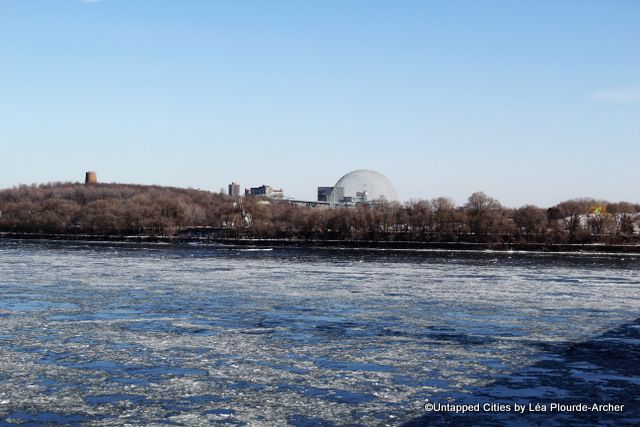
Today, as we walk through the subway doors, setting foot on Ile Sainte-Hélène, we are constantly reminded of the Expo and how much of an impact it has had on the city of Montreal. In fact, most of this island, as well as Ile Notre-Dame, were created for the 1967 World Fair. The grounds have since been turned into a large park and now hold the name of Parc Jean-Drapeau, after the former mayor.
For more pictures taken during the Fair, check out this video which also features the official anthem of Expo 67:
This is the first part in a series about The Quirky Buildings of Montreal. Get in touch with the author @ModStoryteller and read her blog.
Subscribe to our newsletter